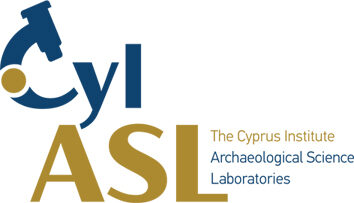The production of copper during the Bronze and Iron Ages is often linked to specific large production regions, such as the Troodos Mountains in Cyprus or the Taurus Mountains in Anatolia. This view often ignores the numerous smaller regional production centres which have only now become increasingly recognised. As part of a long-standing cooperation with Eleni Asderaki-Tsoumerkioti, the former Head of the Conservation Laboratory of the National Museum in Volos (Greece) and her colleagues there, we are studying archaeological finds from Volos, here marked as Kastro Palaia, and geological material from its surrounding region, Magnesia. Other Bronze Age sites in the vicinity are also marked, such as Dimini or Pherai.

The Bronze Age site of Kastro Palaia has been excavated for many years during the 20th century, and yielded a wide range of metallurgical workshop material, from crucibles to casting debris. Most of the metal is heavily corroded, but even then the original as-cast structure of the alloy is still visible, preserved in the corrosion products.

Such finds, little green droplets of in descript shape, are of little use for art historical research. However, it does offer deep insight into the technological practices at the site, and the skills of the ancient metalsmiths. Here, the investigation of this droplet by Scanning Electron Microscope demonstrates that the metal was exposed to air while it was still very hot, probably even liquid; as a result, needle-shaped crystals of tin oxide formed from the hot oxidation of the tin content of the bronze, as can be seen in the image below.

A detailed investigation of a number of crucibles, published in 2013 in Historical Metallurgy, has shown that a wide range of different alloys was used in this workshop, some of which are likely to have come from the immediate hinterland of Volos. Other metals likely came from Lavrion in Attika and from Bulgaria, respectively, although the mixing and re-melting of metal make a clear attribution of origin based on lead isotope signatures difficult.


Ongoing research focuses on the characterisation of ores and slag samples from the surrounding landscape, where numerous small copper occurrences are known.

Previous research related to this project includes:
Asderaki-Tsoumerkioti, A., Rehren, Th., Skafida, E., Vaxevanopoulos, M. & Connolly, P. 2017. Kastro Palaio settlement, Volos, Greece: a diachronical technological approach to bronze metalwork. STAR: Science & Technology of Archaeological Research 3, 179-193.
Rehren, Th., Asderaki, E., Skafida, E. and Karnava, A. 2013: Bronze Age crucibles from the Kastro-Palaia settlement, Volos, Greece – a contradiction of form and function? Historical Metallurgy 47, 111-124.
Adrimi-Sismani, V., Rehren, Th. and Asderaki-Tsoumerkioti, E. (2009): Two Mycenean lead vessels: composition and manufacture. In: Arcaiologiko Ergo Qessalias kai Stereas Elladas, Volos, 695-705.
Asderaki, E., Rehren, Th. and Malakasioti, Z. (2009): Bronze-plated iron bowls from Early Iron Age central Greece. In: J.-F. Moreau, R. Auger, J. Chabot (Eds), Proceedings ISA 2006 – 36th International Symposium on Archaeometry, ISBN 978-2-920576-98-8, CELAT, University Laval: Quebec, pages 383-390.
Rehren, Th., Asderaki, E. and Malakasioti, Z. (2009): The Geometric tomb at the site of Voulakaliva: a first archaeometric approach. In: Archaiologiko Ergo Thessalias kai Stereas Elladas, Volos, 207-216.
Asderaki, E. and Rehren, Th. (2008): Complex beauty: the manufacture of Hellenistic wreaths. In: Proceedings of the 4th Symposium of the Hellenic Society for Archaeometry (Y. Facorellis, N. Zacharias and K. Polikreti, eds), BAR IS 1746, Oxford, 507-514.
Asderaki, E. & Rehren, Th. (2006): The lead metal from two Hellenistic towns in east central Greece. In: J. Perez-Arantegui (Ed), 34th International Symposium on Archaeometry, Zaragoza, 131-136.
Asderaki, E. & Rehren, Th. (2006), “Hellenistic lead workshop in Pherai – A first archaeometric approach”, YPEREIA 4, Proceedings of the 4th International Conference “Pherai-Velestino Rigas”, October 2003, Athens, 79-87 (in Greek).
Asderaki, E. & Rehren, Th. (2002): A study of Hellenistic gilding practice and manufacture of funerary wreaths. iams 22, 19-21.
